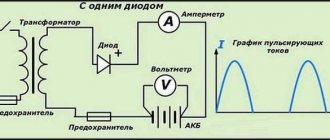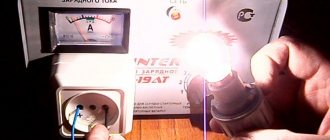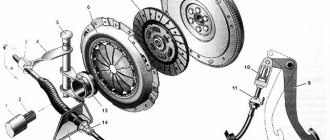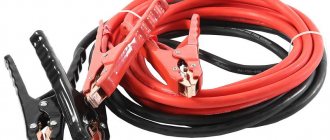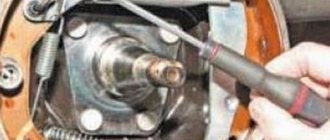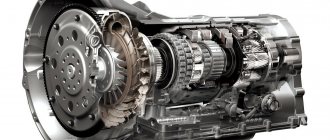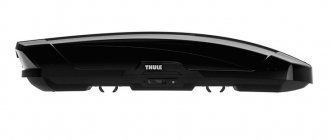Charging voltage
Here, at first glance, everything is outrageously simple. If we choose a car charger for a passenger car, the nominal voltage should be 12 V. Accordingly, the main task is supposedly not to buy a 6- or 24-volt one. But life is not so simple. The fact is that a standard battery is charged with a voltage not of 12 V, but from 12 V to 14.4 V.
The pattern is simple. The more deeply a battery is discharged, the more current it can consume. We (or the store) are obliged to limit this parameter. Therefore, in the first stages of charging, the voltage should be maintained around 13.1-13.5 V. As the battery charges, the readings increase. The voltage increase continues until it reaches the maximum allowable. Usually this is 14.4 V. After this, it must be held, not allowing it to rise. Otherwise, the battery will begin to “boil” with all the ensuing consequences.
How can I use this information when choosing a charger? If you are aiming for an automatic model, it will most likely “take care” of the correct voltage at the battery terminals while charging it. But not always. Some memory devices, although they are positioned as automatic, cope with this task very poorly. They especially often suffer from the maximum charging voltage, which tends to “boil” your battery. It’s easy to check this item if you buy from a live store.
Models with manual adjustments, which are discussed below, are less insidious in this regard. If something happens, you can adjust the charge voltage yourself. As for choosing a charger without automation and adjustments, everything is sad and unpredictable. They can raise the voltage up to 16 V and higher. There are also those that “fry” up to 19 V. It is clear that the battery will die very quickly with such use.
An important point regarding tension. If the selected charger has a voltmeter, take the time to check its readings. It often happens that they lie. It's easy to check. Connect a proven multimeter directly to the battery terminals in voltage measurement mode, and compare its readings with the numbers on the charger screen. Don't let the phrase “tested multimeter” scare you. Almost all of them have sufficient accuracy. Even the cheapest ones. If they lie, it’s by hundredths of a volt, while voltmeters on chargers are sometimes off by half a volt.
When to charge
It's important to remember that it can generally be charged in two ways. If your power source is not too low yet, it may not need to be removed from the car. This is precisely the first option for recharging the battery. It stands in its place, and the generator and motor are switched to operating mode. In this case, it will charge automatically. The process can be speeded up by turning off electrical appliances and increasing the speed. How can you determine that automatic charging is not enough?
Let's start by looking for a built-in indicator, which looks like a kind of “green light” and is present in most sources. Although in fact it is a displacer located in the flask and floats up at the correct concentration and electrolyte level. If it is not visible in the flask, check it and recharge the galvanic cell. Also a good option is a multimeter, which can be used to read data on the terminals. If the charge is full, the voltage will be 12.6 volts or more, but if it is “empty”, the multimeter will show 10.5 volts or so. The most effective way is to use a load fork; it can show a drop in the voltage level under load. All auto stores have one, and checking yours will most likely be free.
If your battery is really discharged, remove it from the car and charge it using the ROM. This is the second way. This method is especially convenient, since the charger can itself determine the required current, and also signals about incorrect polarity of the connection, and when charging is complete, it automatically stops it. We will talk further about how to properly charge a car battery with a charger.
Maximum charging current
The characteristic is selected according to the capacity of the battery that is planned to be charged. But this is discussed separately. Here I would like to focus on such a concept as limiting the charging current. The ability to at least somehow limit the current must be present. The only exceptions may be low-power chargers, which, due to their wretchedness, are fundamentally unable to deliver currents of more than 2-3 A.
With current limitation, everything is the same as with voltage. If you choose an automatic type charger, it should do this itself. Moreover, many models have presets that allow you to manually set the maximum charging current. Options with manual adjustments are also good in this regard, since at the very beginning you limit the current with the handle, and in the further charging process it will only decrease. Needless to say, everything is sad when choosing a charger without automation and any adjustments?
Why is charging current so important? There are several reasons. Firstly, you cannot regularly charge the battery with too much current. This reduces its overall resource. Secondly, the lower the charging current, the better the battery is charged. That is, if you are not in a hurry, charge your car’s battery with as little current as possible. Yes. It's longer. But with such operation, the battery is charged better, and its overall resource also increases significantly.
By the way, this rule also works with batteries in your phones, tablets and other gadgets. Therefore, if you want your smartphone to be charged more “densely,” charge it not from the standard charger that produces a current of 1-2 A, but from the USB port on your computer or laptop. There is only 500 mA (half 1 ampere), which, naturally, will extend the charging time. But the battery charges better, does not heat up, holds a charge longer, and lasts for many years. Verified.
Real power
When choosing a charger, few people look at the declared power, since this characteristic seems unimportant. However, sometimes it helps to understand whether other numbers in the model description are exaggerated. Unfortunately, this kind of thing happens all the time today. Therefore, always pay attention to power.
In case anyone forgot from school, power is voltage multiplied by current. How to use this when choosing a charger for your car? Elementary. Let's say the characteristics of the model you like indicate that the charger produces a current of up to 10 A and has a power of 100 W. As you already know, a car battery is charged at a voltage of up to 14.4 V. That is, in order to produce the stated 10 A for which you will pay your money, it must have a power of 144 W (10 A × 14.4 V). We already see that somewhere we are being deceived.
But that's not all. The fact is that we calculated the power that should be at the output of the selected charger. And in the characteristics, the manufacturer or seller is required to indicate the watts consumed from the network. No matter how high-tech the charger is, its efficiency is far from 100%. This means that part of the energy is spent on heating, operating auxiliary elements, and so on. That is, in fact, the charger discussed above must have a real power of at least 200 W. If not 250 W.
Watts themselves, as car enthusiasts, are not very important to us. But this kind of deception means that the maximum charging current of the chosen charger will be much lower than what we will pay for. Don't be lazy. Check these figures on the models offered. You will be surprised how many positions suffer from this particular sin.
Selecting a charger based on battery capacity
This point is closely related to the maximum charge current and power discussed above. Selecting a charger based on battery capacity is done as follows: take the capacity indicated in ampere-hours and divide by 10. The resulting figure is the maximum allowable charge current for your battery. That is, the selected charger must provide you with such current. It is better to have a reserve so that the device does not work at the limit of its capabilities. Will last longer.
An example for clarity. Your car uses a battery with a capacity of 70 Ah. This means that at the first stage it can be charged with a current of 7 A. Accordingly, you need to choose a charger that is capable of delivering such a current. If you take it with a reserve, then add a couple more amperes. As a result, look for a model that is capable of delivering 10 A.
Regarding the charging current and battery capacity, one point should be clarified. It lies in the fact that only new batteries have the capacity declared on the case. During operation, this parameter decreases literally every day. It follows that a new battery with a declared capacity of 60 A*h should not be charged with a current of 6 A. If such a battery is a couple of years old, then it has at most 30-40 A*h left (depending on how it was used). Or even less. Take this into account not only when choosing a charger, but also when charging batteries of different ages.
Device Vympel-27-2045
This is an inexpensive domestic device, equipped with a small digital screen and easy controls. It can charge the car battery automatically. The driver only needs two actions: press the switch button and adjust the current value using the regulator knob.
The device can output current in the range of 0.4-7 amperes. The digital screen displays the set current and voltage. There are indicators on the case that warn of incorrect connection of the poles, as well as overheating. Consumer reviews say that the device is compact in size, which has a positive effect on space in the trunk of the car. The device does not have a “Boost” mode, so you won’t be able to quickly charge the battery. Therefore, if the battery is discharged in the morning, you will have to go to work by minibus.
Availability of indication
The presence of an indication is an important criterion that should not be neglected. It is needed to control what the selected charger does to your battery. Of course, you can measure volts and amperes using a multimeter. But it's inconvenient. In addition, the multimeter cannot replace some types of indication.
The first thing a good car battery charger should have is an ammeter and a voltmeter. The first device is available on almost all models. Although their accuracy and information content often leaves much to be desired. As for voltmeters, for some reason they are considered not very important devices. But in vain. The service life of the battery depends largely on the charge voltage, so it is a good idea to periodically monitor it. Even if the memory is fully automatic.
Having chosen a charger with a voltmeter and an ammeter, do not be lazy to check their accuracy. This can be done using a simple multimeter. To check the readings of a standard voltmeter, turn the multimeter into DC voltage measurement mode in the range of up to 20 V, and connect the probes directly to the battery terminals. The ammeter is checked with the same multimeter. Only now you need to turn on the appropriate mode on it, move the probe into the corresponding socket, and add it to the circuit in series (between one of the battery terminals and the charger clamp removed from it).
The important thing is that you need to control the voltage at the battery terminals. As a rule, if the standard voltmeter on the charger is not calibrated, it shows what is at the output of its circuit. And between this point and the battery terminals there are also wires. Often not of the best quality. Accordingly, the voltage at the terminals may be completely different from what the device shows on the charger. With amperes, this problem does not exist, since the current strength in the circuit is the same everywhere.
The second type of indication is LEDs or light bulbs (in older models), as well as icons on the display of cool chargers. Very useful, because if available, they allow you to control:
- presence of mains voltage;
- Is the battery being charged?
- end of charge;
- correct connection of the crocodiles;
- overload;
- short circuits;
- overheating and other parameters.
Let us repeat that the presence of such indicators is not at all mandatory. But if you have the opportunity to choose a charger with them, this will only be a plus. At the same time, it is better not to buy a charger without a voltmeter and ammeter. You will be tortured by either monitoring the voltage and current with a multimeter, or frequently changing damaged batteries. And this is not an exaggeration.
Unfortunately, the presence of an indication still significantly increases the cost of chargers. Although their implementation at cost costs the manufacturer mere pennies. This applies to both the indicators themselves and the circuits that control their operation. But this is so for the general development...
Some memory manufacturing companies
Let's take a quick look at some popular charger manufacturers to make your choice easier. It is difficult to say for sure which charger for a car battery is the best out of all the abundance on the market. But by considering products from different manufacturers, you can find something optimal and make the right choice.
ZU "Caliber"
Let's start with Russian manufacturers. The domestic company produces a fairly wide range of devices for charging car batteries at an affordable price.
An example is the ZU-100. The device will cost about 3 thousand rubles. You can charge batteries with a capacity of 20 to 100 Ah and a nominal value of 12-24 volts. You can also note the ZUI-8, which will charge the battery in a fully automatic mode. The Caliber ZU-700 charger is suitable for charging powerful batteries with a capacity of 92 to 250 Ah.
ZU-100
ZUI-8
ZU-700
The assortment also includes professional models for use at service stations.
Chargers "Sorokin"
Available battery chargers are sold. Tools under the Sorokin brand are designed in Russia and produced at domestic and foreign enterprises. As examples, you can see the chargers below with different characteristics:
Charger Sorokin 4A 6/12V
Charger Sorokin 4A 6/12V
Charger Sorokin 15A 12V Boost
As reported on the manufacturer's website, all of these devices can be used to charge WET, AGM, GEL batteries.
ZU "Resanta"
This Latvian manufacturer offers starting batteries that are equipped with a rechargeable battery. Thanks to this, the device will help start the engine if the battery runs out while away from the mains.
PU-1 12V 7Ah 250A
PU-2 12V 17Ah 400A
The PU-2 device, like a more expensive model, also has a USB interface, a compressor, and a flashlight.
Telwin chargers
The well-known Italian company produces high-quality memory devices for a wide variety of purposes.
Among the most affordable are NEVATRONIC 12, T-CHARGE 12, which are suitable for charging all types of batteries (WET, AGM, GEL) with a nominal value of 12 volts. There are also professional models like STARTRONIC 530 at exorbitant prices.
NEVATRONIC 12
T-CHARGE 12
STARTRONIC 530
Charger "Aiken"
Under the Aiken brand, we produce a wide range of chargers for car batteries under license. Below are some commonly used models.
MCB12M 6/12V
MCB15M 6/12V
MCB13S 12/24V
The price range for the Aiken charger is from 1,700 to 3,200 rubles.
Manual adjustments
This includes either smooth adjustments of voltage and current, or software presets in automatic chargers. On the one hand, it may seem that not everyone needs such difficulties. Many people prefer to buy appliances in the “plug in and that’s it” style. However, buying a charger without any ability to correct its operation is not worth it.
There are several reasons for this. Firstly, today you don’t want to regulate anything, but tomorrow you decide to charge the battery consciously and correctly. If there are no adjustments, then you will not be able to do this. Secondly, over time, any electronics wear out. The charging characteristics it produces will inevitably change. For example, the maximum voltage will decrease or increase, causing your battery to either not be fully charged or constantly “boil”. The presence of adjustments and knowledge of the basic rules for charging a battery will allow you to quickly solve this problem.
Special charge modes
This point is discussed here purely for the sake of information content of the material. That is, it will be useful for you to know that such modes exist, but whether to overpay for their presence or not is up to you. Practice shows that they are not of much use. Some of them even have a detrimental effect on the battery life. And those that were invented based on myths about charging batteries deserve special attention and caution.
There are special modes:
- Desulfation - in theory, allows you to remove sulfates on lead plates, thereby regaining some of the lost capacity. In practice it doesn't always help. Especially if the battery sulfation is significant.
- Training is the same as desulfation.
- “Swing” is a mode in which, at the last stage of charging, the device periodically stops and then resumes the process. In theory, it allows you to charge the battery more efficiently and fully. In practice, the usefulness of this mode has not been proven by anyone.
- Standby charging - allows you to keep the battery in a charged state for a long time when not in use. In fact, the mode is useful for those who have a rapidly depleting battery, a faulty generator, or a high leakage current. In other cases, this is a useless addition.
- Fast charging is a mode that allows you to quickly revive a completely discharged battery. This is done due to the high charging current. It is harmful to the battery, so you should not use this mode often if available.
- Quick engine start is an even more stringent mode that allows you to make the starter rotate immediately after connection.
There are other modes, but they are either useless or created to increase sales of chargers. If you want any of the above, then the most harmless and sometimes useful is desulfation or training. But remember that it only helps when sulfation is at an early stage. If the plates have been “overgrown” with sulfates for a couple of years, and you have only just now noticed this, desulfation will no longer help.
By the way, it is possible to imitate such modes as desulfation, training, standby exercise and “swing” with the most primitive charger. The main thing is to understand why this or that mode is needed and on what principle it works. Unfortunately, it is not possible to describe all this here, since these are topics that require separate articles.
Charger manufacturing technology
Today you can choose one of two types of charger:
- Transformer.
- Pulse.
Transformer chargers have a simpler design and are usually cheaper than pulse chargers. Among the disadvantages, the most significant are the relatively large weight and dimensions. Very often they are sold in large, solid-looking cases, but after disassembling it turns out that you bought air at the price of nanotechnology. However, transformer (aka linear) ones, as a rule, are reliable because they have a simple design. There are also advanced models packed with electronics. But they are worth it, mother, don’t worry.
Pulse chargers are more compact, lighter and more expensive. They often have good performance in stabilizing voltage and current, as well as informative screens and additional functions. When choosing, you need to pay attention to the stated characteristics discussed above. Very often they are shamelessly inflated. Although the circuitry of switching power supplies itself implies high power with small sizes.
Rating of the TOP 10 best chargers for car batteries
| Place | Model | Price |
| #1 | Vympel 57 | |
| #2 | Bosch C3 | |
| #3 | Wester CH15 | |
| #4 | Vympel 37 | |
| #5 | AutoExpert BC-44 | |
| #6 | Hyundai HY 800 | |
| #7 | Bosch C7 | |
| #8 | Autoelectrics T-1021 | |
| #9 | AutoExpert BC-65 | |
| #10 | Patriot BCI-10A |
Page navigation:
Availability of protections
With protections, the logic of manufacturers is similar to the indication. If they exist, then you definitely need to increase the price of the model. Although the implementation of any of them costs a penny in practice. However, you should not choose a charger without protection. Even if you are an experienced car enthusiast. Any user can make a sad mistake. Moreover, most often they use chargers in the morning, when sleep has not yet fully passed, and a dead battery has spoiled the mood, and there is a rush.
Protection can be from:
- mains voltage surges;
- polarity reversal;
- overload;
- overheating;
- recharge;
- turning off the mains power and then turning it back on.
For clarity, let's briefly consider the last point. Imagine that you put the battery on charge, selecting or manually setting the desired mode, and went about your business. And in the process the electricity went out. The charger turned off and the settings were reset. Then the electricity turns on, but you still haven’t approached the battery. A charger without protection in such a case begins to charge the battery as if it had been reconnected. That is, high current and unknown voltage. If there is protection, the charger will “remember” the settings and the achieved charge mode in the event of a blackout, and after turning it on again, it will competently resume the process.
It is clear that inexpensive chargers most likely will not have the protection described. It's not so scary. But as for polarity reversal and short circuit protection, it’s better not to buy without them. Practice shows that even the most experienced and attentive car enthusiasts can accidentally touch the plus to the “ground” or even confuse the polarity in the morning twilight.
Transformer chargers
Let's move on to a review of the best automotive chargers that use transformers.
| Name | Manufacturer country | Output voltage (V) | Maximum charging current (A) | Maximum battery capacity (A/ h) | Compatible Battery Types | Number of charging stages | Charging modes | Indication | Dust and moisture protection class | Where can I buy |
| DECA CLASS 16A | Italy | 12/24 | 16,0 | 200,0 | WET, AGM, GEL | 2 | Manual setting | Ammeter | IP 21 | |
| WEIDERKRAFT WDK Start620 | Germany | 12/24 | 90,0 | 1000,0 | Lead-acid batteries of all types | 3 | Normal, fast, start | Ammeter | IP 21 | Ya.Market |
| FORTE CB 15FP | China | 12/24 | 7,0 | 135,0 | Lead-acid batteries of all types | 2 | Maximum, minimum | Ammeter | IP23 | |
| GARWIN CHARGE GE CB220 | Germany | 12/24 | 27,0 | 450,0 | Lead-acid batteries of all types | 2 | Normal, accelerated | Ammeter | IP 21 |
DECA CLASS 16A
Used to charge maintenance-free batteries and lead batteries with gel electrolyte. There is protection against short circuit in the output circuit, overload, and reverse polarity. If your car does not start for weeks or even months, for example, during shift work, choose Deca CLASS, as it is able to keep the battery in working condition all this time.
WEIDERKRAFT WDK Start620
WEIDERKRAFT WDK Start620
In addition to charging batteries, this device is used to start any passenger cars, light trucks, minibuses, and motorcycles. Used wherever lead-acid batteries are used. WEIDERKRAFT WDK is protected against reverse polarity when connecting and recharging. This is a starter charger.
FORTE CB 15FP
FORTE CB 15FP connects to any household network. Extending the service life of the battery is facilitated by the presence of overcharge protection, and the charger is protected from polarity reversal (incorrect connection of probes to the battery). Fuses protect against overloads. The insulation class allows heating of insulating materials up to 180°C. You don't need a lot of space to store the device, as it is small in size.
GARWIN CHARGE GE CB220
GARWIN CHARGE GE CB220
Charger for professionals allows you to charge batteries in accelerated mode, delivering a current of 27 A. But it only applies to completely discharged batteries. At the same time, the temperature is constantly monitored to prevent overheating. It tolerates mechanical stress and low temperatures (down to -40°C).
ELITECH UZ 20/12
ELITECH UZ 20/12
Metal is used to make the case, which guarantees complete safety of the internal contents. Charging is performed in standard and fast mode. There is a special pocket for cable management, and a convenient handle for transportation.
Quality of clamps and power cables
This is the last but not least thing on our list that you should pay attention to when choosing a charger for your car battery. Unfortunately, even very expensive and branded models are often equipped with too thin wires and useless crocodiles. All this then quickly breaks down, heats up, melts and even catches fire. Therefore, pay attention to what wires the Chinese have attached to the charger you choose. Especially if it comes with declared high currents.
As a last resort, you can install your own wires and crocodiles. It often happens that the charger itself is not bad on the Internet. Shouldn't you buy it just because the manufacturer is cost-effective? You can select good-quality power cables yourself, or buy a ready-made set that is truly designed for high currents. Well, solder them either yourself, or contact a friend who knows how to hold a soldering iron in his hands.
Comparison of chargers
The brands listed above are a small part of those available on the market. There are quite a lot of models on the market. It is very difficult for an inexperienced person to choose a suitable model of the best battery charger. To compare several chargers, see the table below.
| Charger name | Battery capacity | Rated voltage output | Recharge during storage | Weight |
| Berkut smart | 6-160 | 14,4-17 | + | 0,9 |
| Bosch C3 | 1,2-120 | 14,4-14,7 | + | 0,85 |
| Orion PV 150 | 15-90 | 6,0-15 | + | 0,75 |
| DHC SC5E | 10-200 | 14,8 | – | 2,7 |
| CTE MXS5 | 0,2-100 | 14,8 | + | 0,70 |
| Keepower batter | 3-80 | 14,4 | + | 0,85 |
If the need for a good charger arises periodically (cold season, the car has not been used for a long time), then you need to buy inexpensive models. You should settle on a simple option without adjustments and various switches.
To control charging, more experienced car enthusiasts can buy Funculon, a charger for a car battery with the function of adjusting the charging current and a built-in ammeter. With built-in AGM and GEL batteries, you need to make sure before purchasing whether the charger has a charging function for the battery.
What to pay attention to:
- Battery type. Lead and gel ones will require a special model; everyone else can buy a universal one.
- Battery capacity. (can be found on a special sticker). Depending on the capacity, choose the power of the best charger. Designated Ah.
On a note!
Most chargers have a current of 6A. They serve as a universal tool for passenger cars. For SUVs, use a model with a current of at least 18A.
Before purchasing, you need to study how to choose a good charger. Opt for the option that has smooth adjustment. The lower the charging power, the longer the model takes to charge. It will take about 3 hours to fully charge the battery. But it still won't charge completely.
With more time and amount of current, the battery can be fully charged. Most car owners use devices that operate from the electrical network. Modern devices can control the nutrition process. When charging is complete, the system reduces power until the battery is fully charged. When fully charged, the system automatically turns off.
Which charger to choose in the end
Rule one: if you don’t want to shorten the battery life, immediately discard the cheapest models. There is definitely nothing worthwhile among them. And some are even dangerous. Rule two: try to choose a car battery charger with an indication. At least with an ammeter and a voltmeter. Rule three: refuse to buy a model without foolproof protection. Rule four: do not forget to choose a charger for your battery according to capacity and type. Rule five: do not buy an inappropriately expensive professional model for personal periodic use. Most likely, most of the features included in it will never be useful to you.
